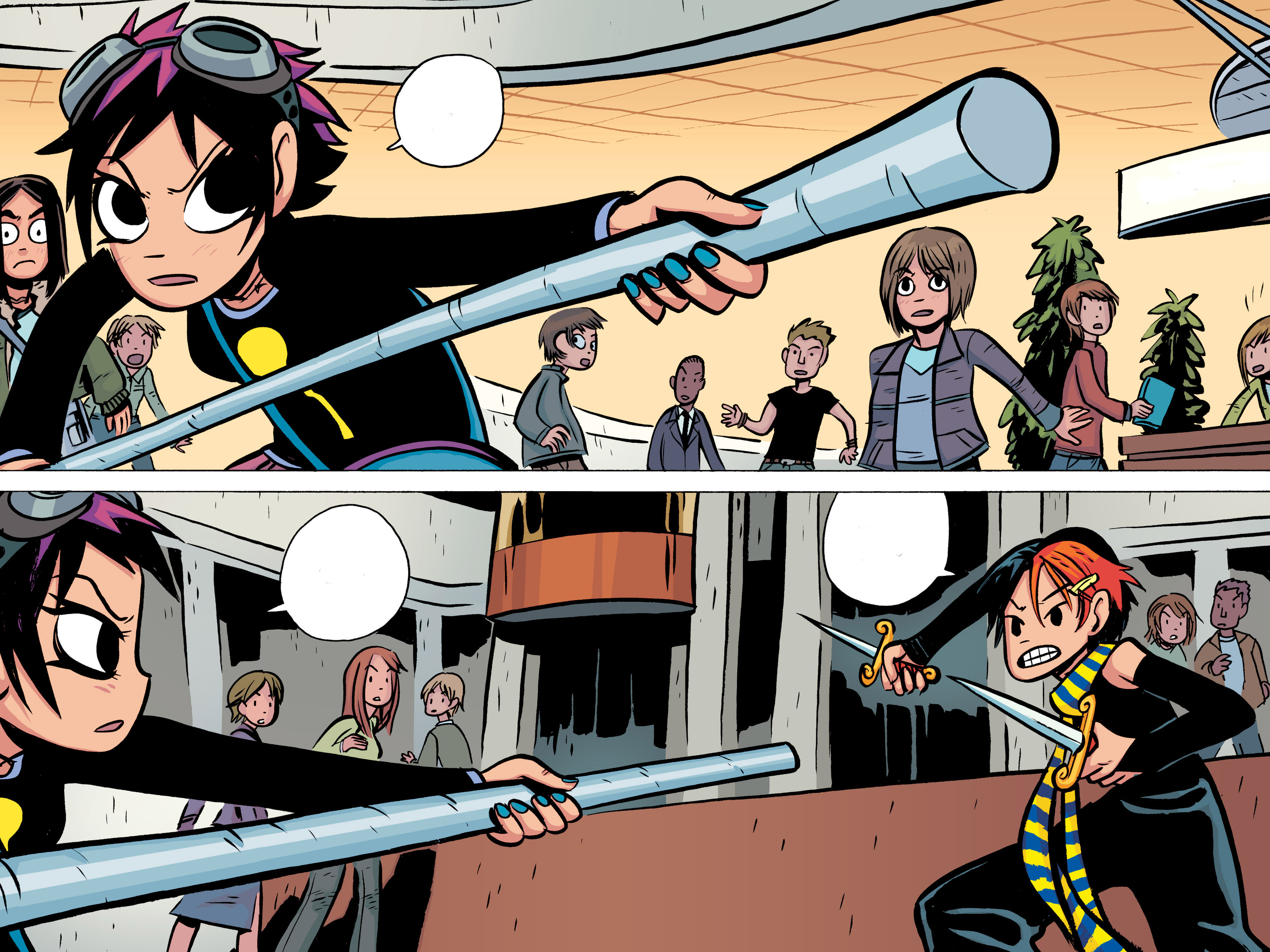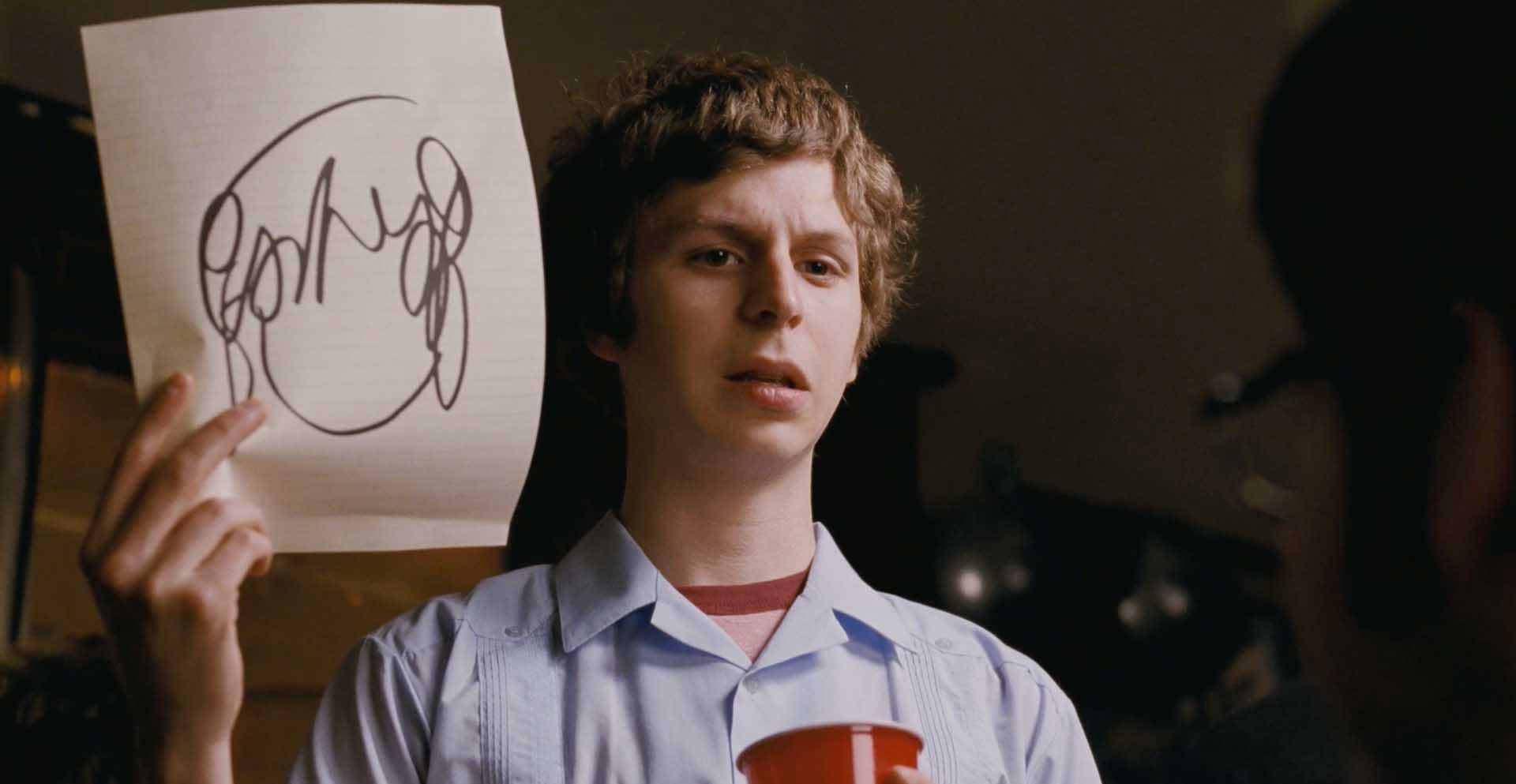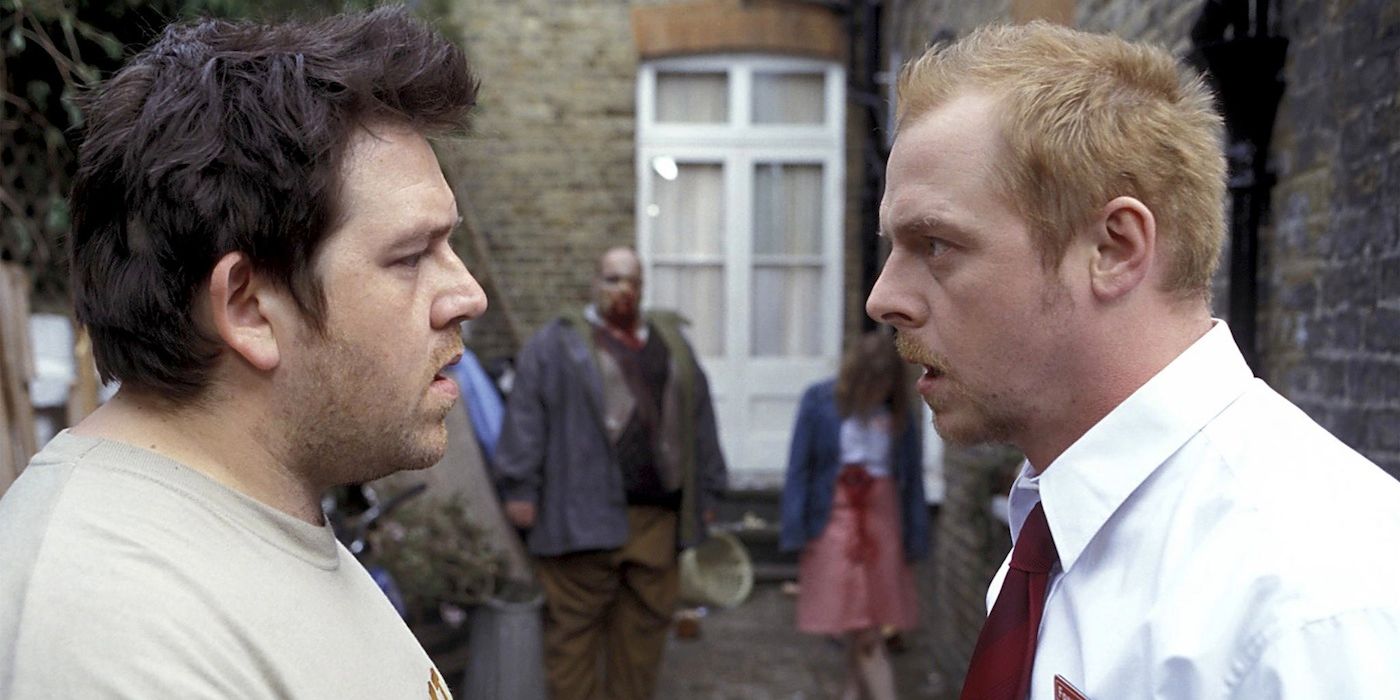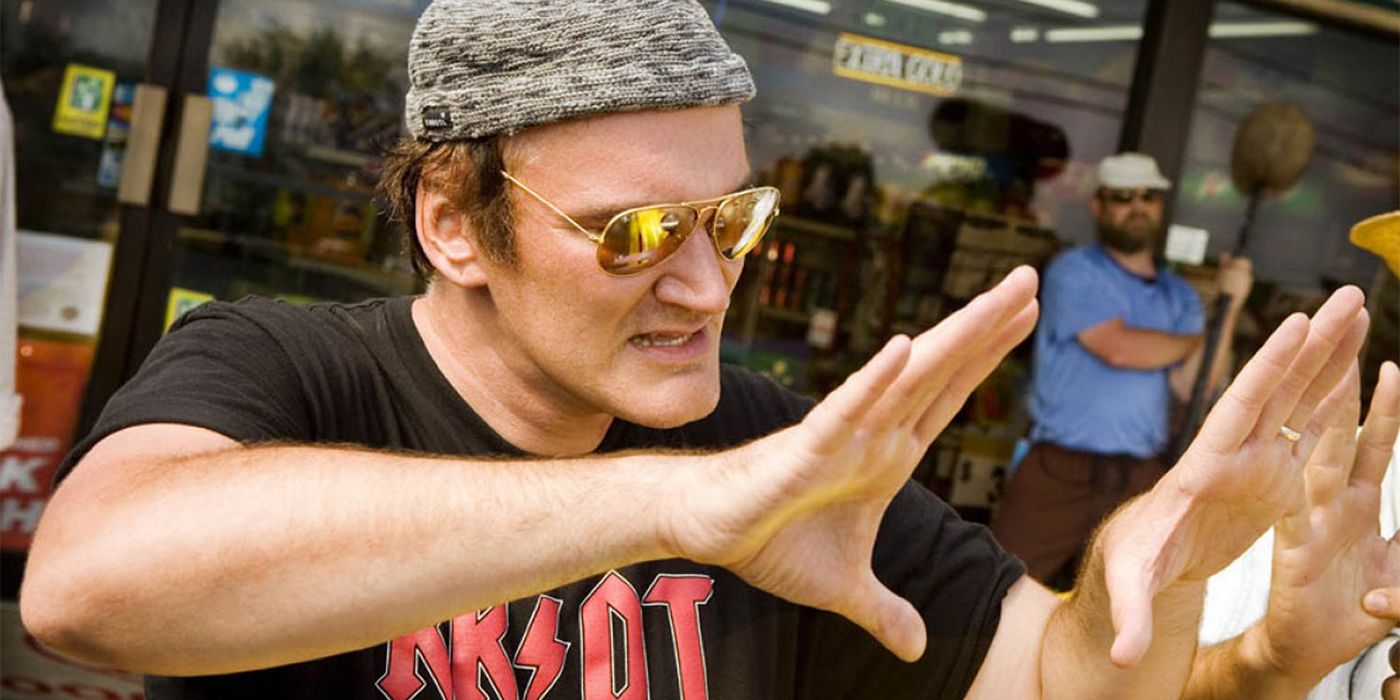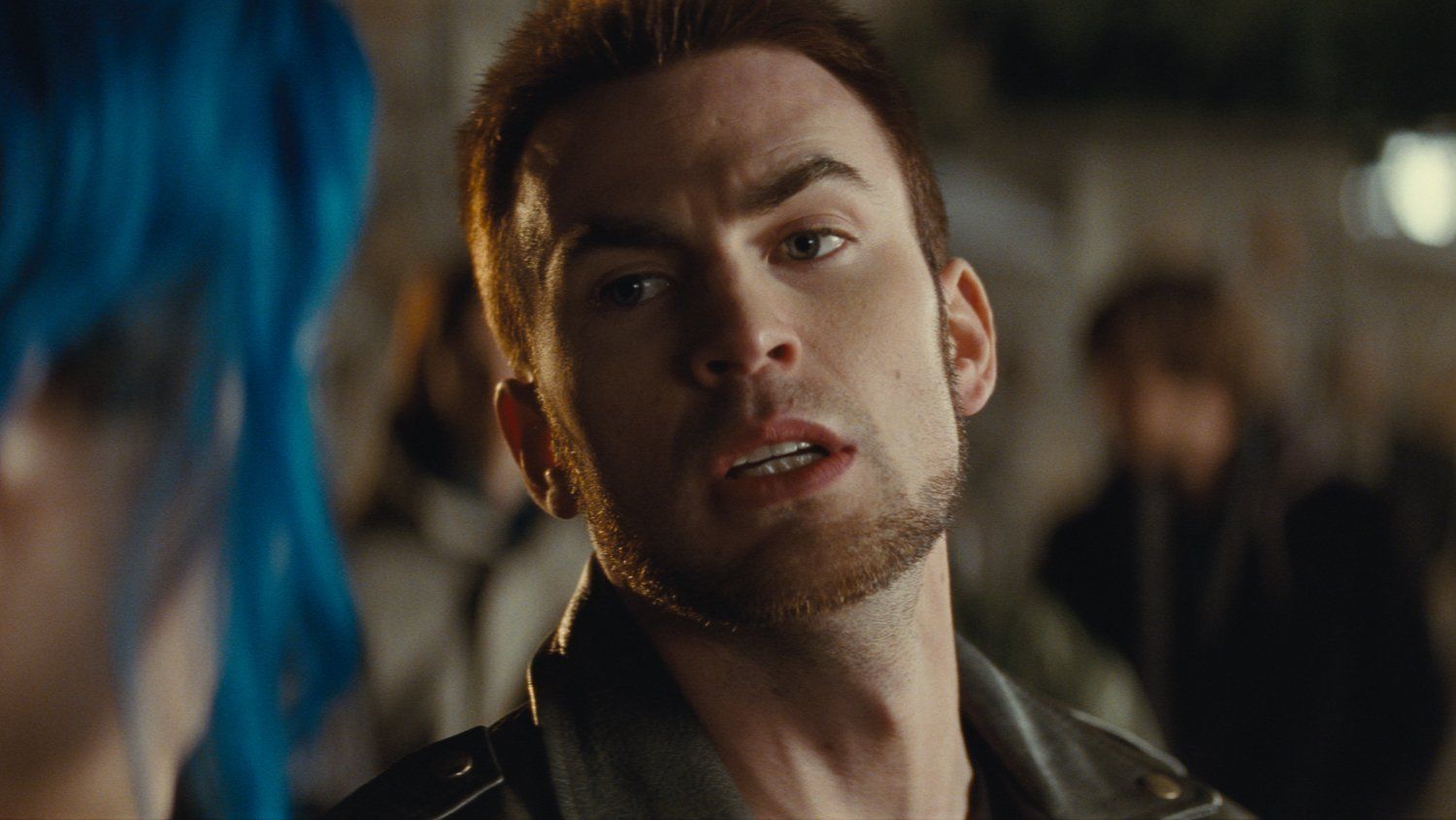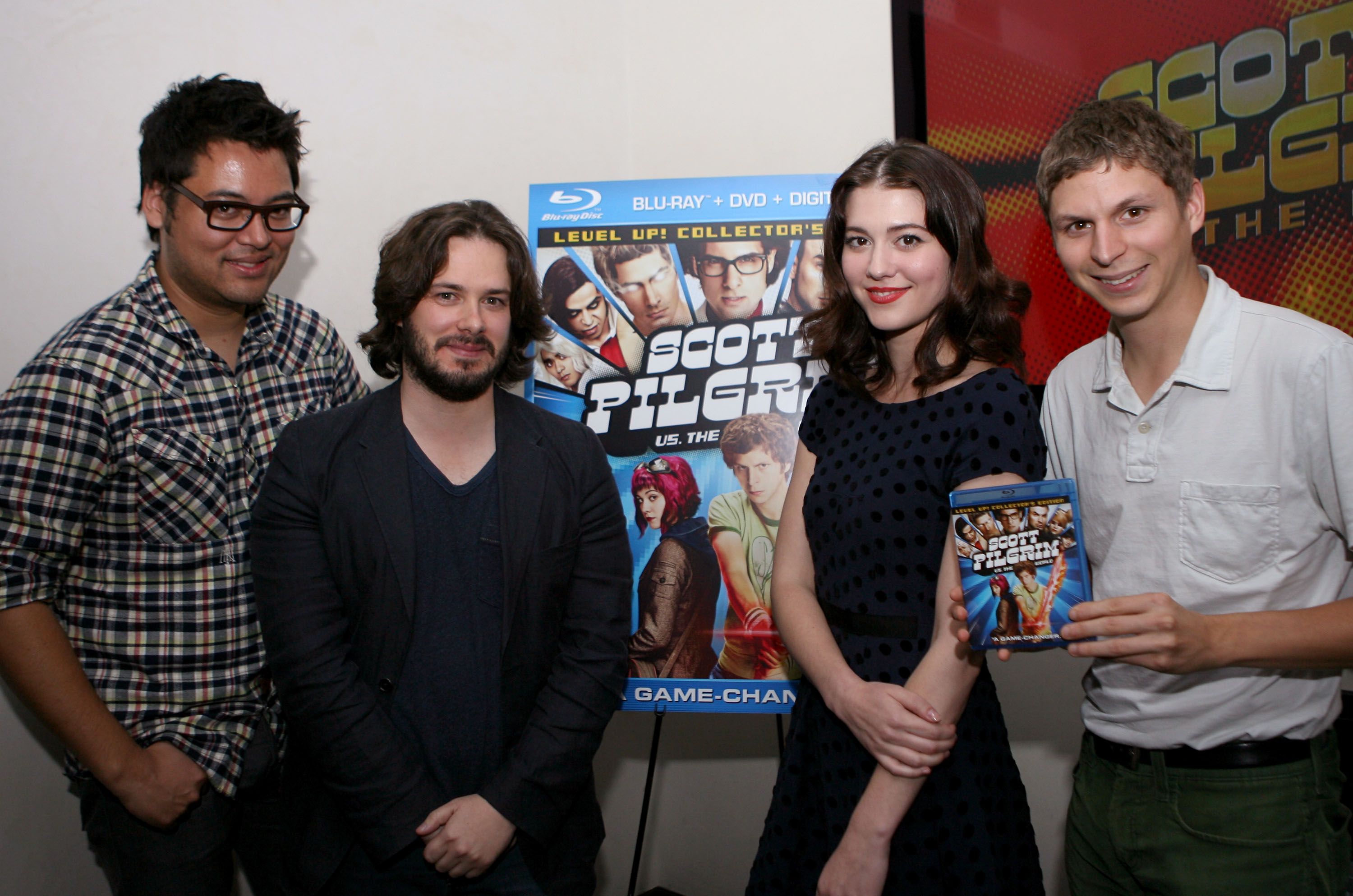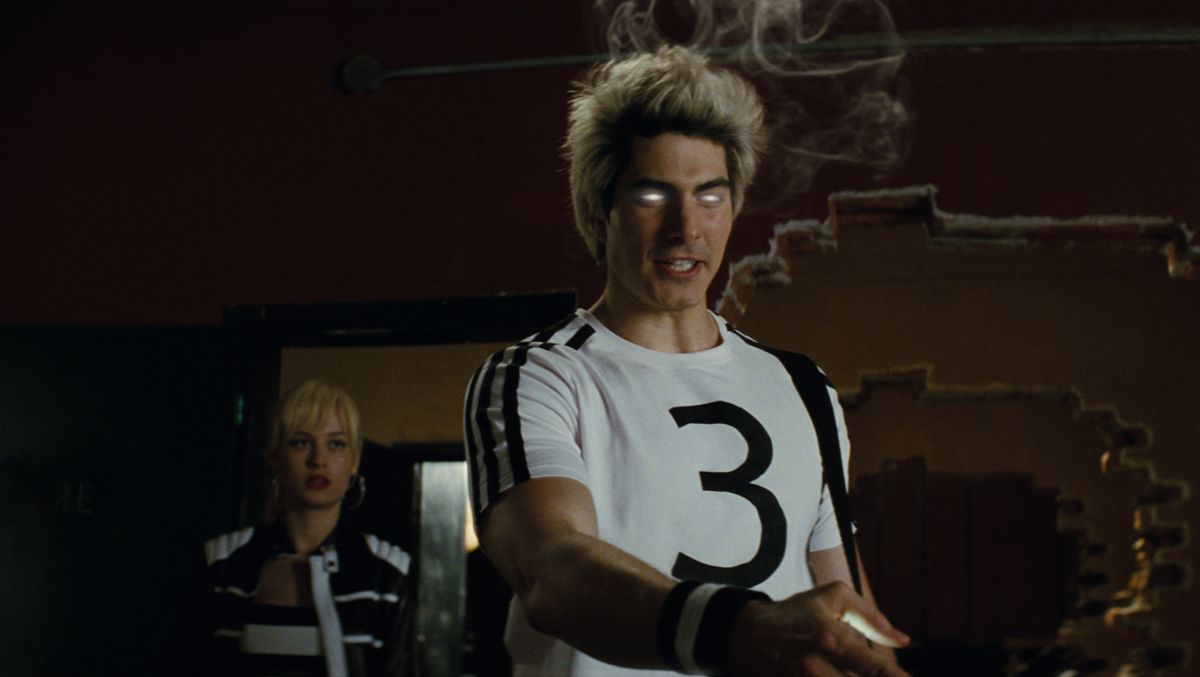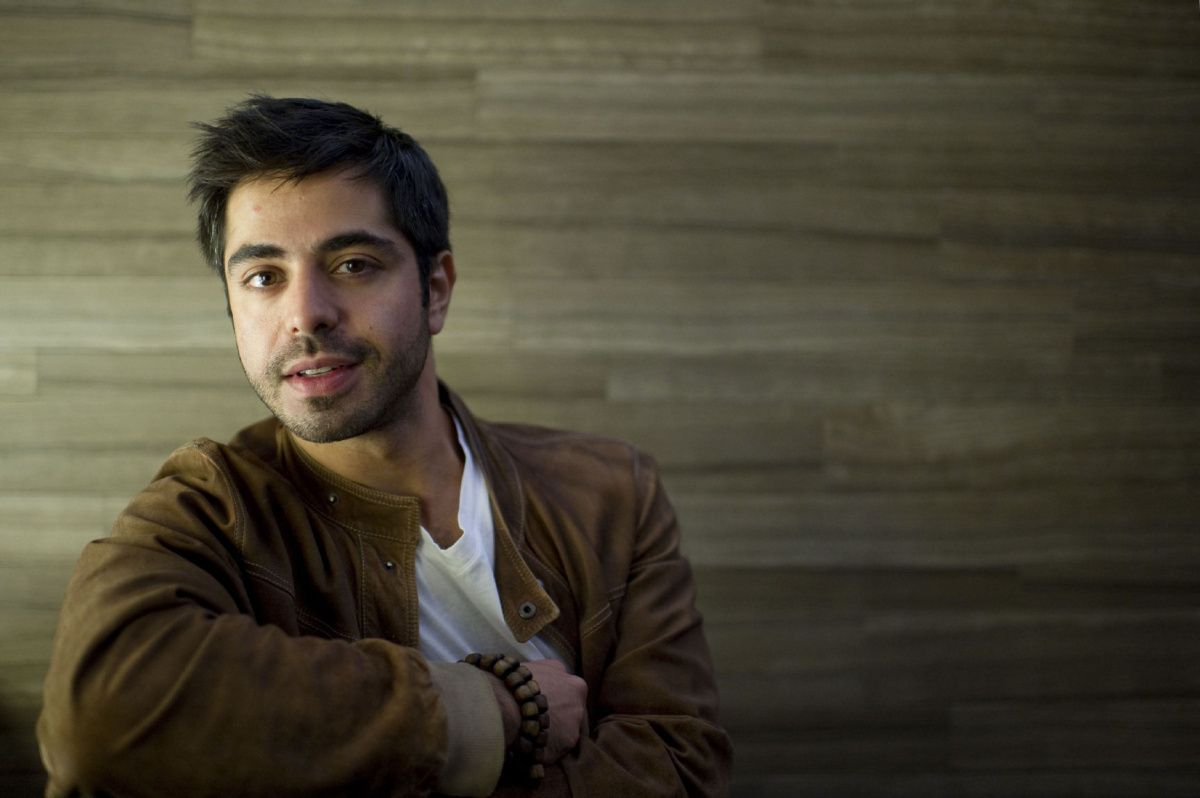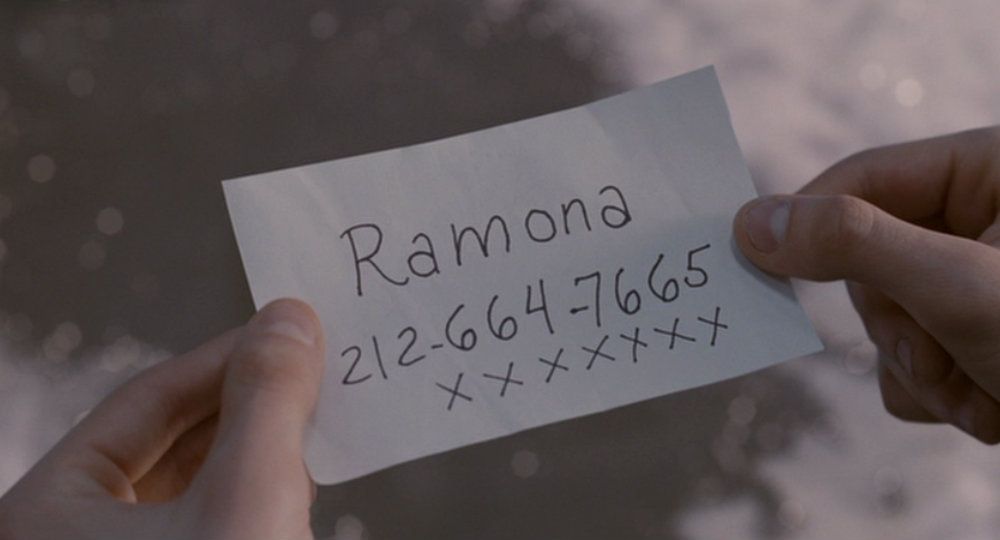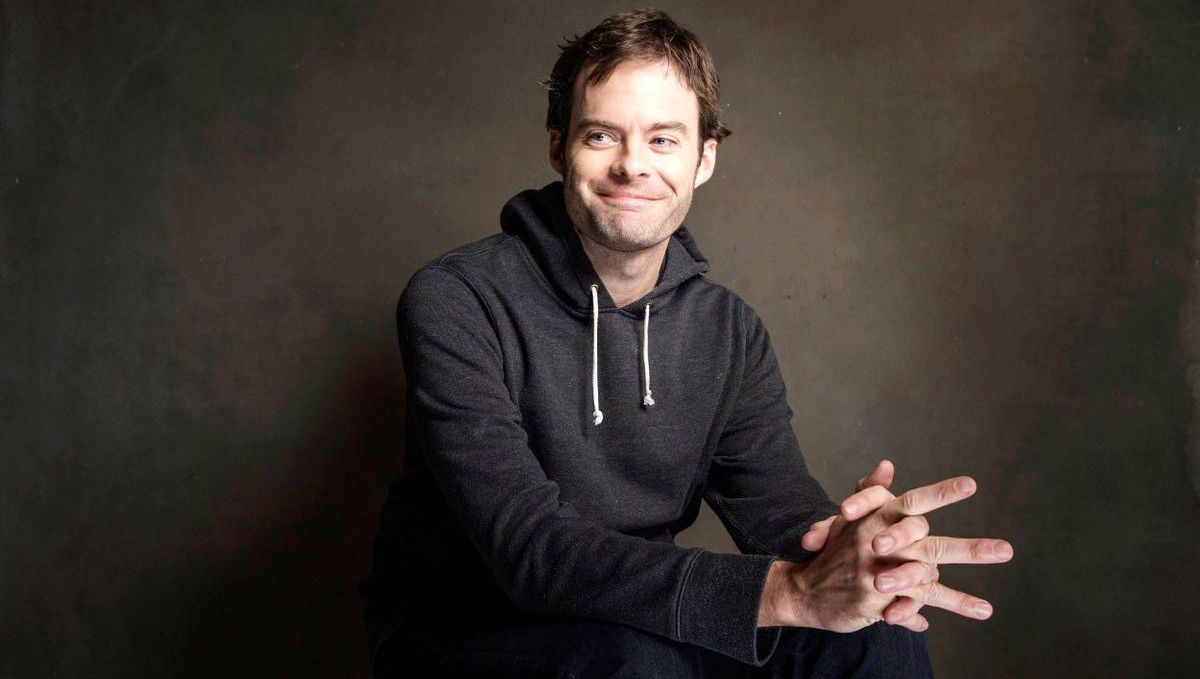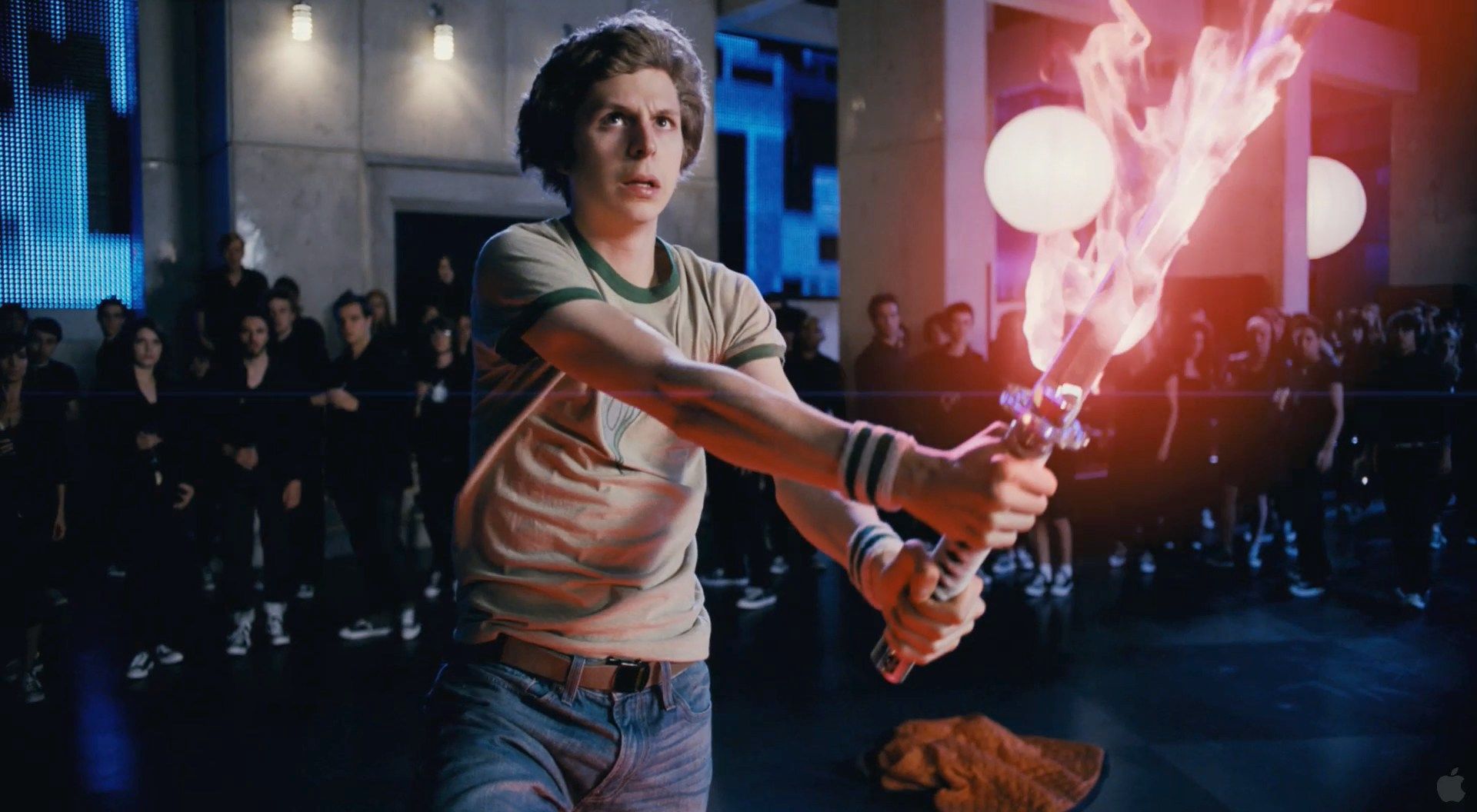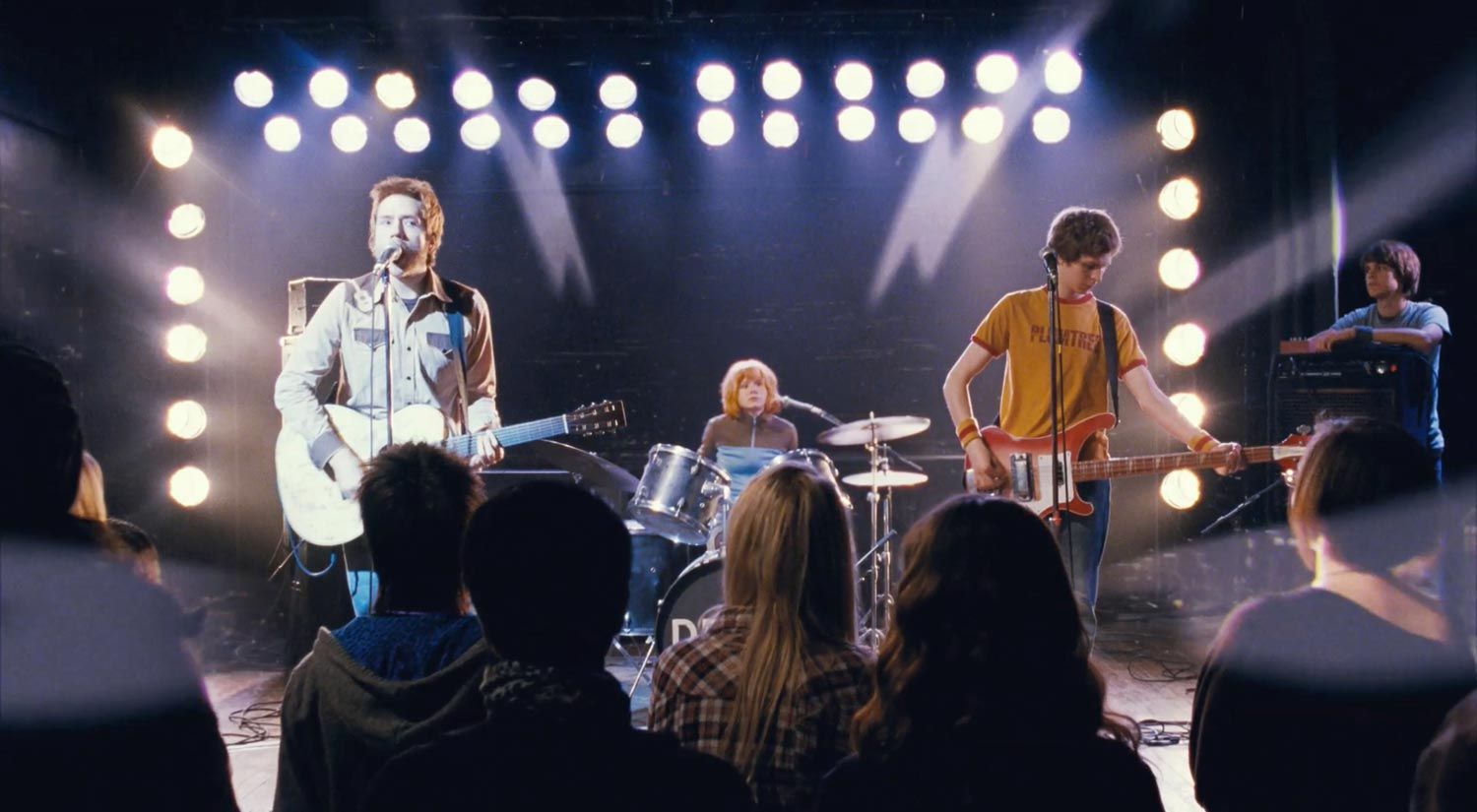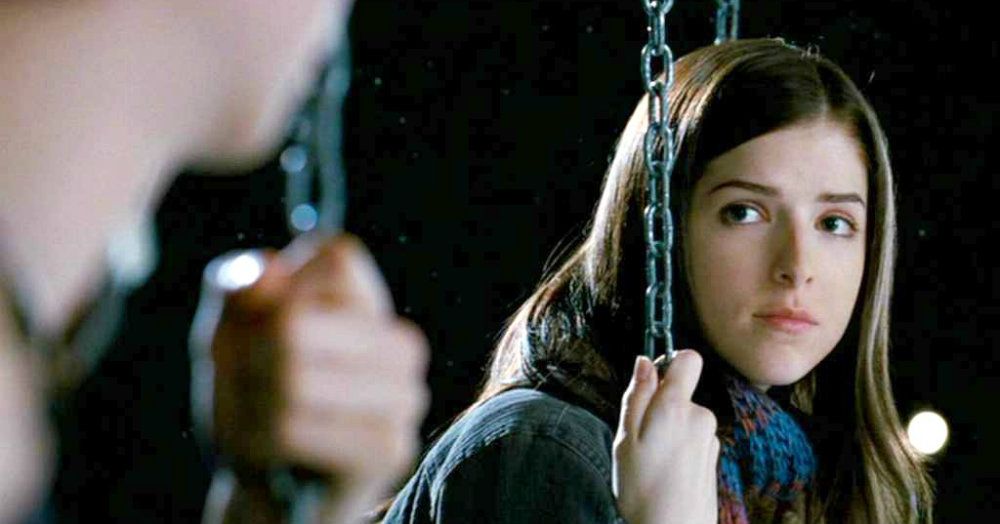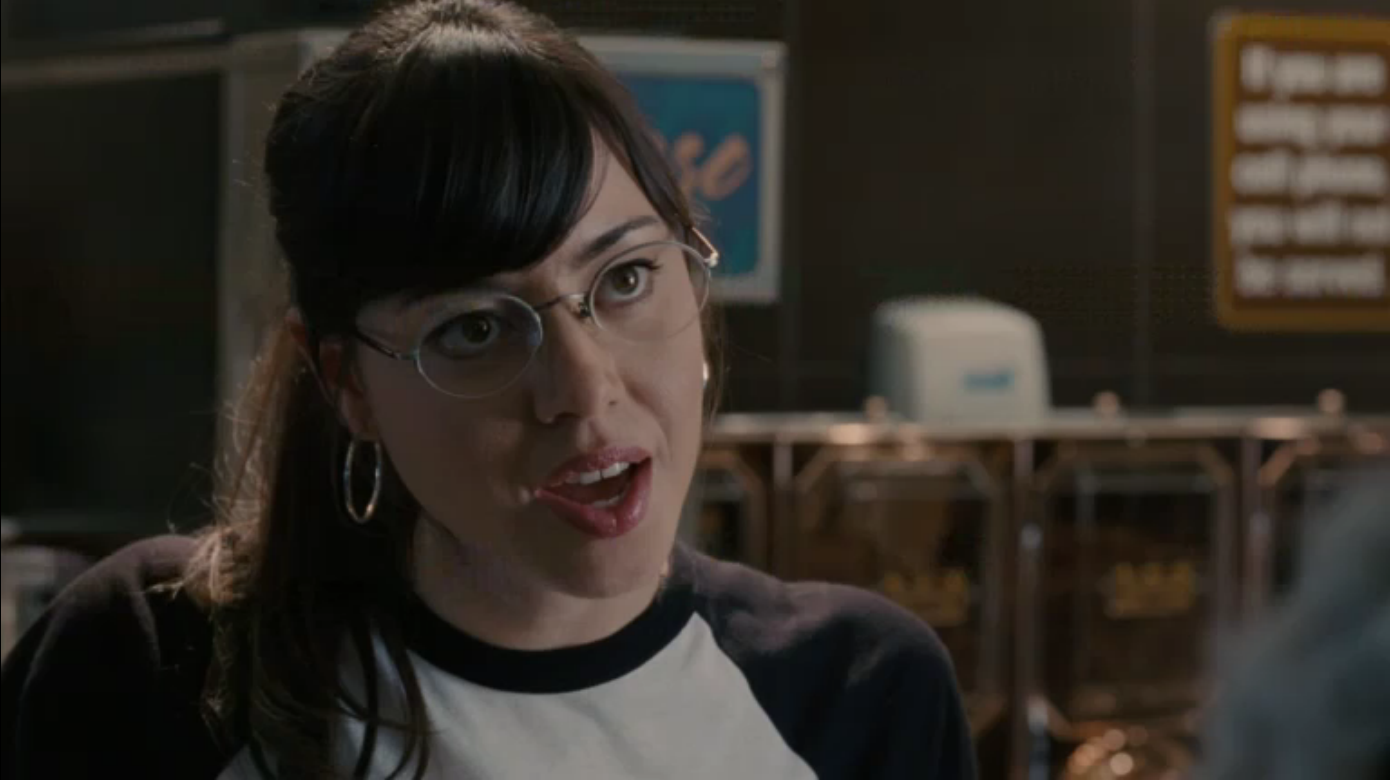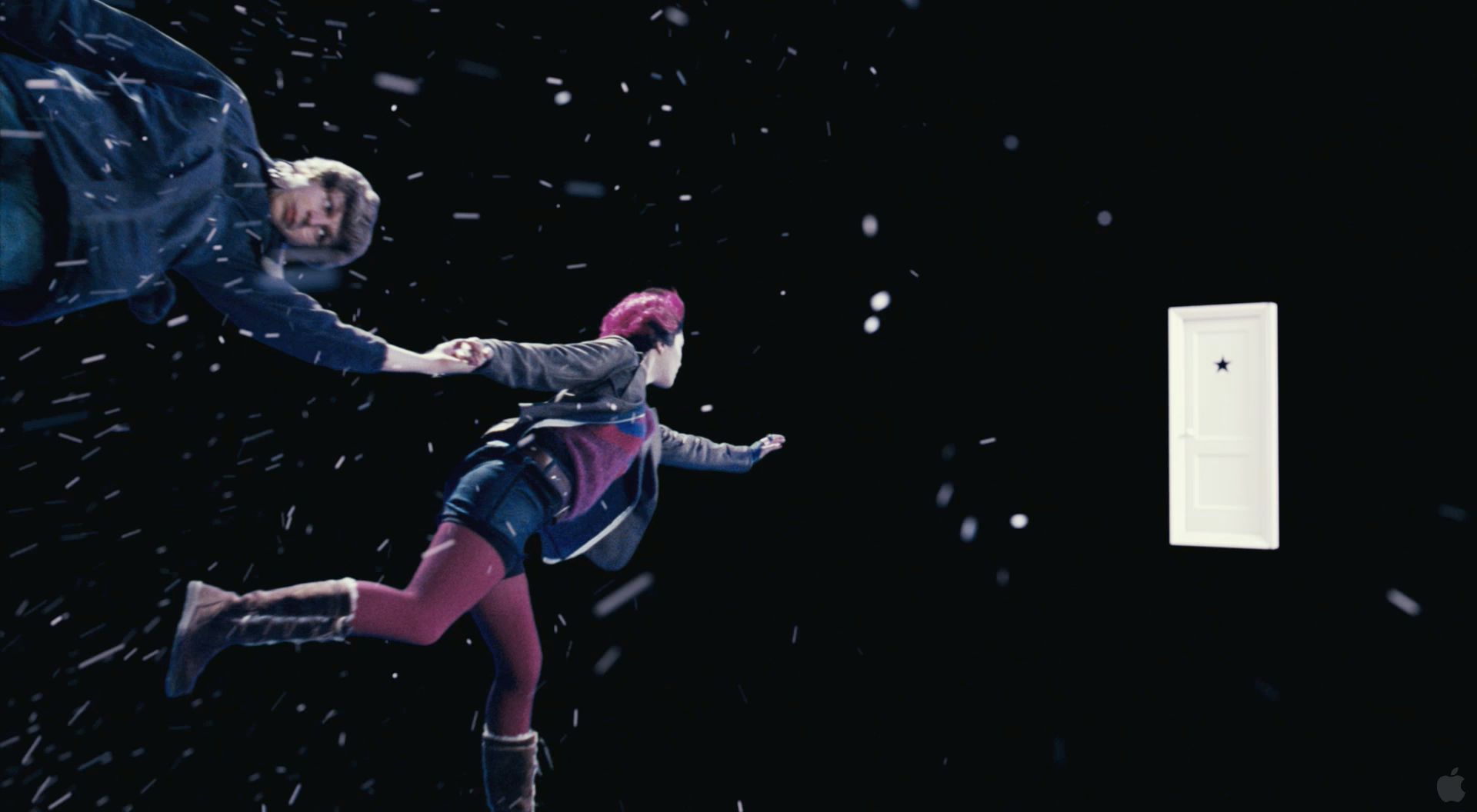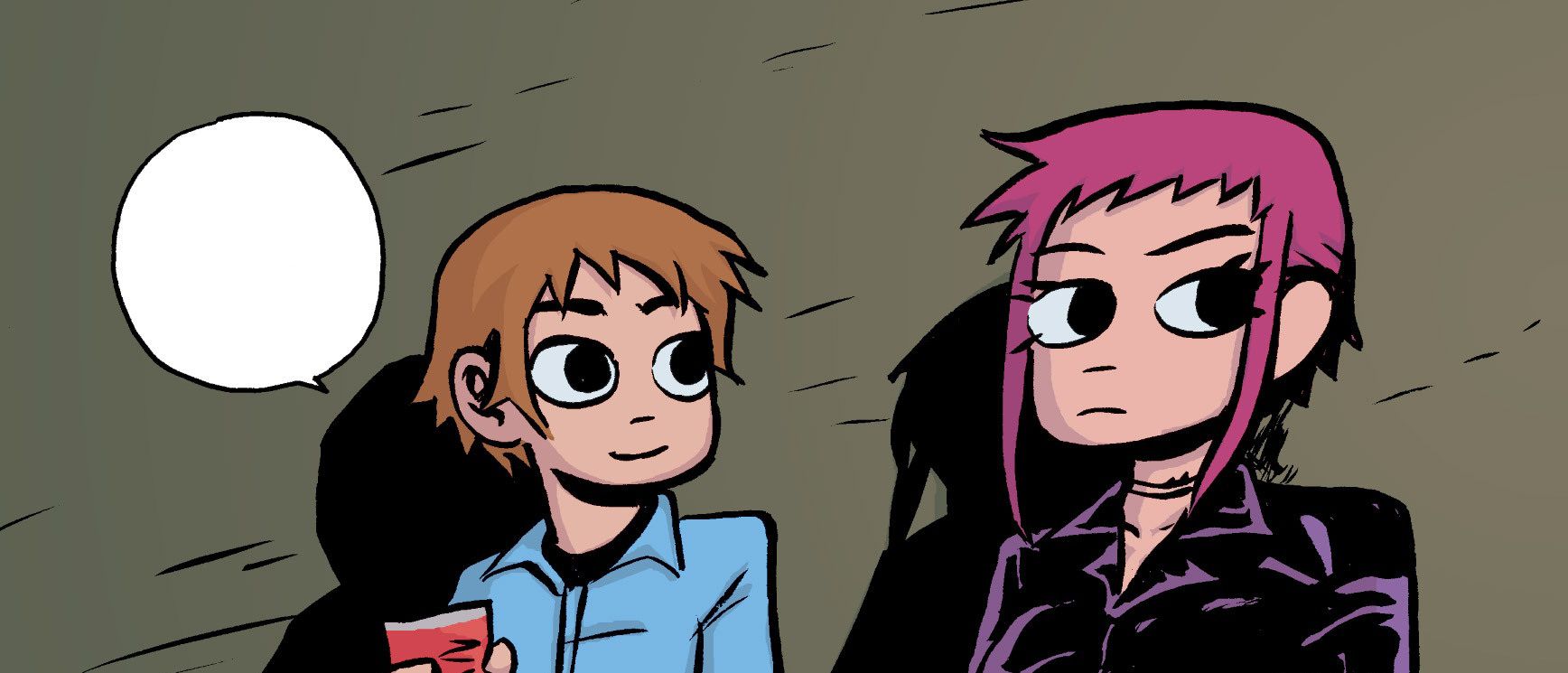It doesn't matter whether you consider it a video game movie, a comic book movie, or just an action/comedy about nerd culture in general-- Scott Pilgrim vs. the World is one of the best examples of all three. Directed and co-written by Edgar Wright of Shaun of the Dead fame and starring a cast of well-known but still-rising stars, Scott Pilgrim unfortunately wasn't a huge box office success. However, the film had strong critical praise and has since gone on to be considered a modern classic with a huge fanbase.
Based on the Scott Pilgrim series of graphic novels by Bryan Lee O'Malley that debuted in 2004, the movie spent a lot of years in various states of gestation before Wright-- with help from his co-writer Michael Bacall (who wrote the screenplay for 21 Jump Street) and O'Malley-- finally figured out how to adapt the comics into a live-action movie and still retain their original spirit. The result was a movie that looked, sounded, and felt like no other film, taking the video game-inspired comics and turning them into a visual tour de force that it's tough to watch without a smile plastered across your face.
Obviously, a lot goes into such an endeavor, both behind the scenes and in front of the cameras. As it has now been eight years since both the release of the movie and the publication of the final issue of the comic series, it felt like a good time to look back on this magical film and what all went into making it so special.
Here are 20 Secrets Behind The Making Of Scott Pilgrim Vs. The World.
The Boy Is Mine
The Scott Pilgrim movie was being made at the same time that Bryan Lee O'Malley was still actively working on the comic series.
With no existing ending to base the movie on, Edgar Wright and company had to come up with their own.
Originally, the movie was going to end with Scott reuniting with Knives Chau instead of staying with Ramona Flowers. In fact that ending was even shot. Wright, Michael Bacall, and even O'Malley all decided that the movie would have a more satisfying conclusion if Scott had his happy ending with the girl he spent the entire movie fighting for - Ramona.
Additionally, Jason Schwartzman's slimy Gideon character was also going to change into a robot for the film's climax, but that idea was cut well before the movie went into production.
There Can Only Be One
Michael Cera is pretty much perfect in the role of Scott Pilgrim. The argument can be made that it has thus far been his best performance. Granted, the entire movie has pitch-perfect casting.
Cera, in particular, gives the movie a lot of its heart and he walks just the right balance of capturing the essence of the original character and also making it his own. Apparently, Edgar Wright knew all that even before the movie went into production.
The director said that he had been a fan of Cera's since seeing him on Arrested Development, and as soon as Wright knew he'd be making a Scott Pilgrim movie, he immediately wanted Cera to play the title role. He says he never once even had anyone else in mind for the part.
A Six-Year Journey
Though it took six years for the Scott Pilgrim comics to be adapted to the big screen, producers were already seeking out directors shortly after the first issue was published. As a matter of fact, Scott Pilgrim vs. The World could have been Edgar Wright's next movie after his breakthrough hit, Shaun of the Dead, had producers had their way.
If Edger Wright had not planned to film Hot Fuzz after completing Shaun of the Dead, it's possible Scott Pilgrim have been released earlier.
Wright had already planned to direct Hot Fuzz next, so he put Scott Pilgrim on the back-burner for a few years in order to do the action film with Simon Pegg and Nick Frost first. When he returned to Scott Pilgrim, and with even more work done on the story by way of the comics by that point, it was finally time for everyone to get to work on the movie.
Quentin Tarantino To The Rescue
Directors Edgar Wright and Quentin Tarantino are good friends, as well as mutual fans of each others' work. Tarantino is also known to be very creatively generous with his moviemaking friends, frequently making suggestions and offering to help out on their films whenever he is struck with an idea that he think might be of benefit to them.
In the case of Scott Pilgrim vs. The World, Tarantino conceived of the film's room-stretching title sequence, which was then implemented fairly late into production as the team hadn't yet decided on how they were going to introduce the title of the movie following its initial cold opening.
Wouldn't it be nice to have that much creativity that you can make all your own movies and still have great ideas to spare that you can just give away?
Inspired By The Hive Mind
In between his two stints playing Marvel Comics characters on the big screen, Chris Evans turned in a scene-stealing performance in Scott Pilgrim as egotistical movies star Lucas Lee, one of Ramona's evil exes.
While he has too many memorable lines to count in his fairly short scene in the movie, one of the funniest was actually inspired by a real-life exchange between Edgar Wright and a famous musician.
Kieran Culkin's Wallace tells Lucas that he's a "big fan," to which Lucas smugly replies, "Why wouldn't you be?" According to Wright, that's basically verbatim the conversation he once had with Pelle Almqvist of the band The Hives, with Almqvist casually dismissing Wright's profession of his respect for the rocker. Obviously, Wright got the last laugh career-wise.
The Obligatory Creator Cameo
It's a pretty old Hollywood tradition, base a movie on something else and have the creator, star, etc of the original thing make a cameo in the movie. Sure enough, original Scott Pilgrim creator Bryan Lee O'Malley briefly appears onscreen in Scott Pilgrim vs. The World, alongside his wife at the time -- and fellow cartoonist-- Hope Larson.
O'Malley and Larson's cameo doesn't include any lines but they are momentarily front and center in a scene where many of the movie's principal cast are in the background.
The scene in question is pictured above, taking place when Scott and friends are having a drink after their first band performance in the movie. There wasn't a happy ending for O'Malley and Larson's marriage, as the couple divorced in 2014.
A Nerd Stands Alone
It's easy to assume that all of the actors in a movie like Scott Pilgrim are avid geeks, who are way into video games and such in real life. What we tend to forget is that, well, they are just actors. The people in Scott Pilgrim are no more required to be gamers as people in legal dramas are required to be actual lawyers.
To that end, most of the cast were oblivious to a lot of the video game references scattered through Scott Pilgrim. A notable exception is Brandon Routh, who is a self-professed gaming nerd who has poured hundreds of hours into World of Warcraft and plays a lot of video games in his free time.
No Brits Allowed
For his first "American movie," Edgar Wright wanted to make a point to have the cast of Scott Pilgrim vs. The World not contain any British actors. He had initially thought he succeeded in that endeavor, until a Brit slipped through unnoticed in the casting process.
Wright didn't realize until after Satya Bhabha was already cast in the role of singing, dancing, magic-using villain Matthew Patel. Bhabha was not only a native Londoner, but the actor actually grew up not far from where Wright lived. Bhabha nailed the role and he was obviously cast for a good reason, so Wright decided to just go with it.
A Cast Of (Mostly) Twentysomethings
The cast of Scott Pilgrim vs. The World was pretty young at the time they made the movie. Obviously, it being Hollywood and all, they were all still older than the characters they were playing by a number of years, but at least we aren't talking about actors pushing 40 playing teenagers.
While the actors may be a few years older than their characters, it doesn't take away from the theme of youthfulness from the film.
As were pointed out by actors Thomas Jane and Clifton Collins Jr, they were the only two actors in the cast that were over 30 at the time of production. That real-life youthfulness is a big part of what made the movie's spirit come through so well and that's what gave the Vegan Police such a commanding presence when they showed up being noticeably older than everyone else.
For A Good Time Call...
We don't realize at the time, but when Scott looks down at the slip of paper that contains Ramona's number, we're getting a clue at the events of the movie. The seven Xs along the bottom of the paper, as both the audience and Scott himself would come to learn, represent the seven evil exes that Scott will need to defeat in order to be with Ramona.
What we also don't realize is that the phone number itself has significance, and we've likely seen it before. Universal Studios owns that phone number, and they use it in many of their movies in lieu of the overdone 555-5555. Other films that have used the phone number 212-664-7665 include The Adjustment Bureau, Definitely Maybe, and Munich.
A Familiar Voice
Voice-over narration can be a tricky thing to pull off in movie and it can easily go very, very wrong, but Scott Pilgrim does it to great effect.
"The Voice," as it is called in the credits, typically serves to explain something about Scott's inner thoughts or past that fleshes out a particular moment in the film. If it sounds oddly familiar, that's because it is.
Bill Hader of Saturday Night Live fame provides said voice. He also does the voice over for the movie's fictional arcade game Ninja Ninja Revolution, using his talented pipes to create a different voice than his own but still sounding enough like him. You probably had a slight inkling that you knew who it was, but just couldn't quite place it.
Don't Blink
One of the goals of Edgar Wright in making Scott Pilgrim was for it to be a live-action movie but with the feel of a comic book/video game/cartoon. The most obvious way this was achieved was through the movie's charming visual effects, but there was also something else that was a little more subtle and something that most people probably didn't even notice. Wright did not allow the cast to blink on camera.
It fit the cartoonish, video game vibe of the film.
If a scene was filmed perfectly but one person blinked, Wright would re-do the scene. Wright felt that the lack of blinking would give the movie an anime feel.
It's tough to say for certain whether it was effective or if most viewers even noticed, but the cast would later relay lighthearted stories about Wright re-doing otherwise perfectly-good takes because someone blinked.
Musical Authenticity
Anyone who has seen Juno already knew that Michael Cera could play a little guitar, but what about everyone else in Scott Pilgrim who performs in the various bands? Each and every person you see in the movie that is singing and/or playing an instrument is actually doing so, or at least doing an exact pantomime to a backing track.
While some people were cast because they had the pre-existing ability to play their instrument, others didn't and they had to learn for the movie.
Cera also had to take some lessons in order to learn to play bass well enough for his part. He also had to learn to play the battle theme from Final Fantasy II, of course.
The Age Gap
We've already covered some interesting facts about the ages of the actors in Scott Pilgrim, mainly that they all played someone younger than they were. But that isn't the only weird tidbit in regards to the ages of the characters and the actors who play them.
A portion of the film focuses on the fact that Scott, a 23- year-old, is dating Knives Chau, a 17-year-old high school student. However, the actress Ellen Wong, who portrays Knives, is three years older than Michael Cera. Perhaps that's why their slightly inappropriate relationship didn't read as creepily as it could have.
Anna Kendrick, who plays Scott's supposedly younger sister, is also older than Cera. To top it all off, Cera is even a year younger than Johnny Simmons, who played "Young Neil."
The Wright Stuff
The most direct reference in Scott Pilgrim vs. The World to the original graphic novels, at least visually, are the animated flashback sequences that are used whenever Ramona is telling the story of one of her evil exes. It would be easy to assume that Bryan Lee O'Malley did these himself, as it looks almost exactly like the original comics.
Edgar Wright enlisted help from his brother Oscar to bring Ramona's flashback scenes to life.
The similarity to O'Malley's work, of course, wasn't an accident, Oscar set out to make the sequences look like the Scott Pilgrim comics. In addition to working on some of his brother's other films, the talented Oscar has also storyboarded for Solo: A Star Wars Story and Wonder Woman.
10 Reasons Why
Bryan Lee O'Malley was deeply involved with Scott Pilgrim vs. the World, making story notes and pitching in on dialogue. He also created crib sheets for each character that helped to flesh them out, and sent them to screenwriters Michael Bacall and Edgar Wright who then boiled them down to a list of "10 Secret Things" about each character and passed them out to their respective actors.
O'Malley later claimed that the character notes were meant to be lighthearted and weren't to be taken that seriously in each actor's portrayal of their character. While most of those "secret things" remain secret, it was revealed that the list given to Aubrey Plaza stated that her character, Julie, had a crush on Scott. Whether this informed her character or not is unknown. Plaza played Julie exactly how you'd expect her to.
Dear Nintendo
One of the first obvious bits of video game nostalgia that viewers discover in Scott Pilgrim vs. the World is a very familiar sound cue from The Legend of Zelda: A Link to the Past. It wouldn't be the last or most significant use of Zelda music within the movie-- the next was reserved for Scott's dream sequence when he first "encounters" Ramona.
According to Wright, he was so determined to have those Zelda songs in the movie that he personally wrote a letter to Nintendo's headquarters explaining his desire to use the music, and calling the Zelda soundtracks "nursery rhymes to a generation."
Obviously his letter was effective, and one of Scott Pilgrim's most pivotal moments is scored to of one of gaming's most pivotal soundtracks.
Stunt Casting
Scott's battle with evil ex Lucas Lee is one of the most unfair battles in the whole movie, at least initially. Instead of just having to take on Lucas himself, Scott has to face the actor's entire stunt team before he can fight Lucas one-on-one. A group of guys that all share a vague resemblance to Chris Evans and could easily, as Lucas claims, do his wide shots for him.
Edger Wright hired Chris Evan's stunt double for the Lucas Lee fight scene, giving them their moment to shine.
Luckily, the producers of Scott Pilgrim vs. the World didn't have to bother having a casting call for tough Chris Evans types-- Lucas Lee's fictional stunt team is comprised of real-life stunt men who already work with Evans. It's always nice when these often unsung heroes of Hollywood get a rare moment the spotlight.
Fake Bands, Real Songs
One of the things that really stands out in Scott Pilgrim vs. the World is the quality of the songs that the fictional bands perform. Generally, movies have bands cover existing songs, or settle for C-level songs that someone probably cooked up in an afternoon.
To ensure that Scott Pilgrim had great, original music, Wright and his team decided to just ask real rock bands to help out.
Industry vet Beck penned the songs for Scott's band, Metric did Clash at Demonhead's music, and Broken Social Scene did the tunes for the group that Wallace heckles during the battle of the bands. In addition to just writing the tunes, each band/artist also aided in the production of the songs and even pitched in some instrumentation.
Art Imitating Art
When Scott Pilgrim vs. the World first began filming, only five volumes of the book series had actually been completed, with Bryan Lee O'Malley having merely a rough first draft for the sixth and final book. Because O'Malley was helping out with the movie at the same time as he was working on finishing his last Scott Pilgrim book, the movie ended up affecting the book.
Edgar Wright and Michael Bacall were able to finish the script based, in part, on what O'Malley had planned for the sixth book. In essence, they wrote it before O'Malley did.
As a result, O'Malley ended up liking some of the things they did for the movie and even asked if he could borrow some of it-- including specific lines-- for the book. They obliged, of course.
---
Did we miss any secrets about Scott Pilgrim vs. the World? Tell us in the comments below.


